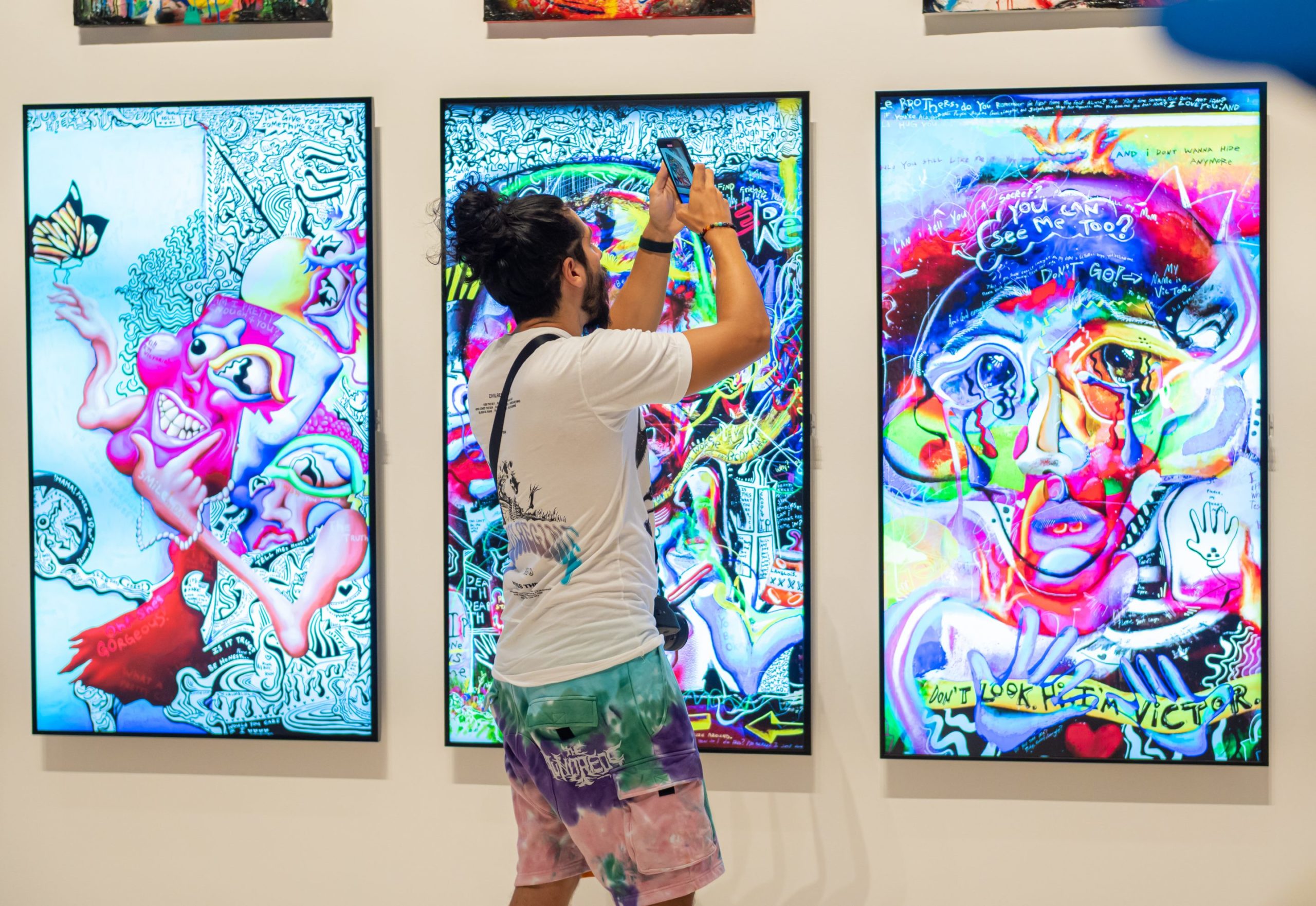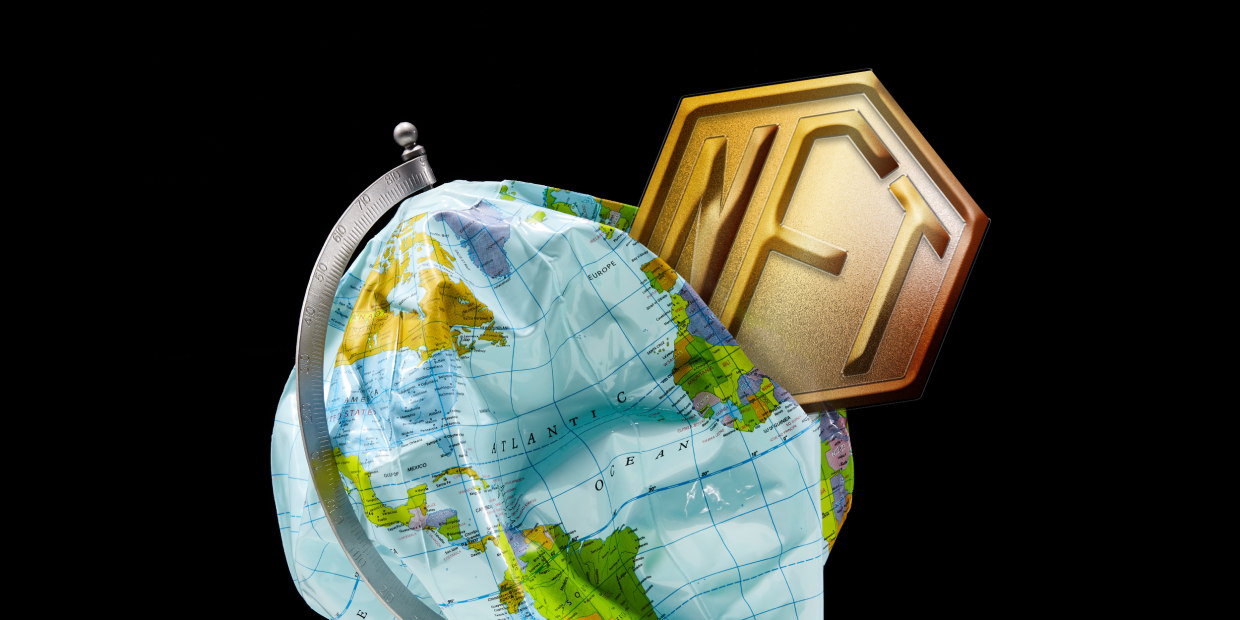The ABCs of NFTs: What Does a Crypto-Art Future Mean for the Planet?

With the many ways technology has upended and improved our lives, it comes as no surprise that art—one of the most ancient forms of human self-expression— changed so much under its influence. We’ve strayed far from the days of strictly physical paintings, and with digital art, online visual marketing, and even AI-produced pieces, the future of self-expression seems to rely more on keyboards and digital pens than it does paintbrushes.
NFTs, a term we can’t seem to avoid online, are no exception. They’ve taken the art world by storm, surprising even the most traditional skeptics by outselling most pieces sold by a living artist. Beeple, an artist and NFT pioneer, recently made waves for auctioning off a piece for a record-breaking $69.3 million. With their introduction to high culture, we all want to know: What exactly are NFTs and how will they change our world?
They’re Pretty Unique
NFT stands for “Non-Fungible Token,” meaning they can’t be replaced with anything else. As a crypto-technology, they’re similar to Bitcoin but not quite the same. While a Bitcoin can be exchanged for another Bitcoin or cash, NFTs function like a one-of-a-kind trading card—and trading one means receiving something different, and less valuable, in return.

Like Bitcoin, ownership of an NFT is recorded on a constantly updating digital ledger, most commonly the Ethereum Blockchain. Virtually anything can be exchanged on this digital platform, where users can “create, publish, monetize, and use applications” as they wish.
Why are NFTs all the Rage?
Here’s where things get complicated. NFTs only give buyers ownership of the token associated with the content, not the content itself. Purchasing an NFT, whether it be art, music, or even tweets, allows you to make copies of it and share it as you wish, but the ownership and rights remain with its creator. If copies of the digital art can be made, purchasing an NFT seems a frivolous and pricey pursuit.
But the same can be said about screenshots and pictures of physical art. As NFT aficionados see it, owning a copy of the original isn’t the same thing as owning the original itself. It also doesn’t hurt that these pieces are quite expensive and are backed by a digital guarantee of authenticity, making them all the more exclusive and enticing for wealthy crypto consumers. Since NFTs present a unique and untradable art form, the demand for ownership they create means that artists can charge even higher prices for their pieces—making it a very creator-friendly platform.
NFTs and the Planet
But as recent outrage over certain artists’ use of NFTs has unearthed, many are raising questions about their environmental impact. This concern is neither new nor restricted to NFTs, but their growing popularity—further bolstered by a booming market worth $8.2 million a week according to Forbes—has made them the face of the global crypto-environmental discussion.

Cryptocurrency, in general, consumes tons of energy. Researchers from the University of Cambridge have found that generating one bitcoin annually consumes about the same amount of electrical energy that it would take to power whole countries like Malaysia or Ukraine. Ethereum, the platform used to trade NFTs specifically, consumes about as much electrical energy as Uzbekistan and has a carbon footprint comparable to that of Mongolia. With this news, it’s no surprise that Earth-conscious consumers are hesitating to partake in the growing crypto industry.
Greening NFTs: Solutions to the Crypto Concern
Concerns over the environmental impact that NFTs and other crypto platforms could cause have since surpassed whispers in online forums and educational articles—this news has had a significant impact on industry. Recently, Elon Musk tweeted that Tesla would refuse Bitcoin as a form of payment for vehicles, opting to explore more eco-friendly options instead. As a result, the price of Bitcoin fell by $9,000 almost immediately, according to CBS News. With Tesla taking action, a solution to our crypto-concerns was imminent.
With the watts and watts of energy that NFTs consume, it seems impossible for tech-obsessed art lovers to have their sustainable cake and eat it too. But as Jason Bailey, creator of the digital art blog Artnome, has found, there are less harmful ways to share crypto art.

Bailey launched Green NFTs, a bounty system tasked with raising money for and promoting planet-friendly NFTs. Their work has already resulted in promising solutions. Namely, using proof-of-stake rather than proof-of-work to power crypto transactions. Unlike proof-of-work, which consumes massive amounts of energy as computers solve complex puzzles to allow purchases to go through, proof-of-stake requires users to deposit some of their currency as proof of their personal stake in the system.
Though this would be more energy-efficient, it is complicated to implement and therefore requires some patience—but as years of technological innovation have come to show, the best things come with time.


Leave a Reply